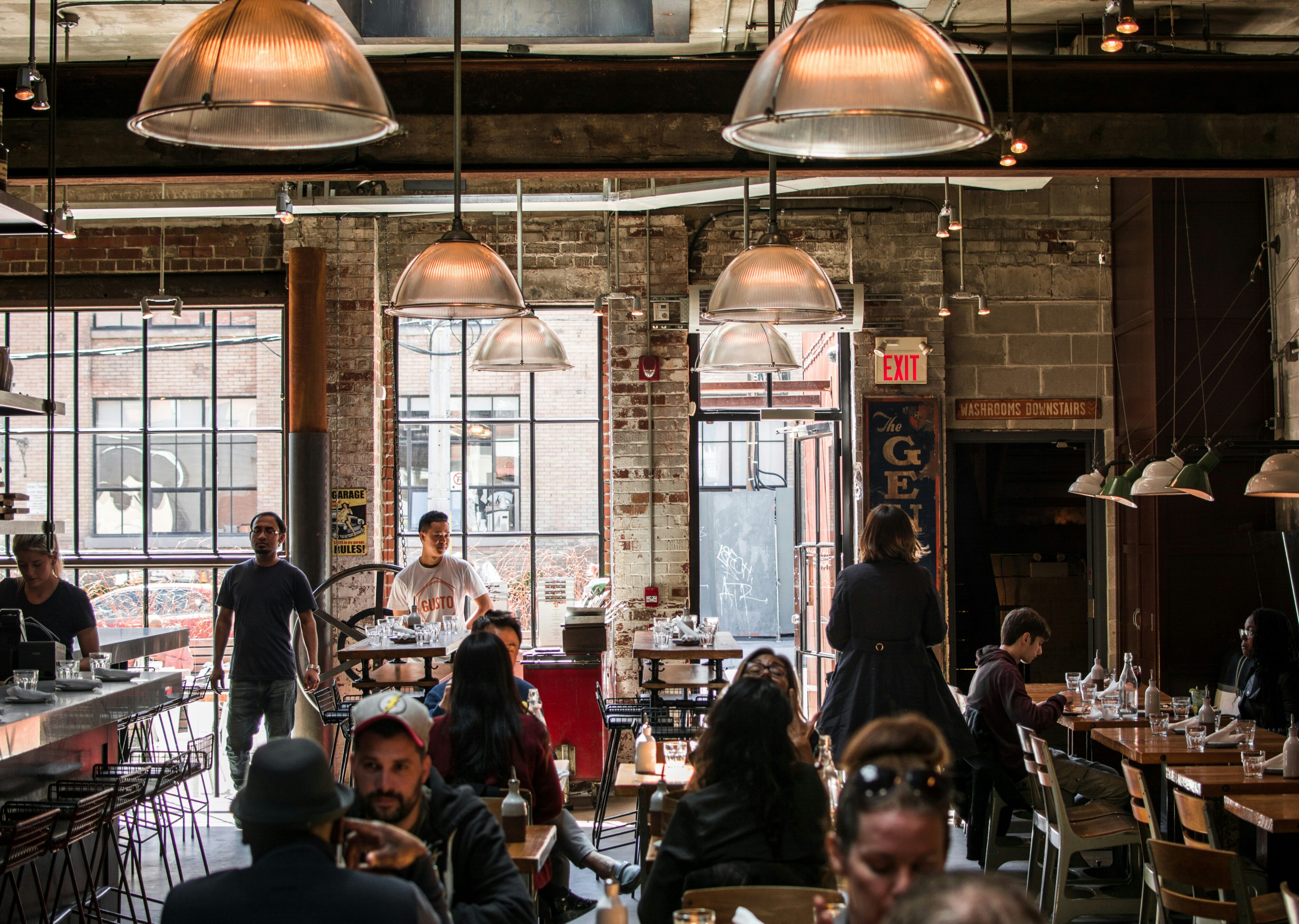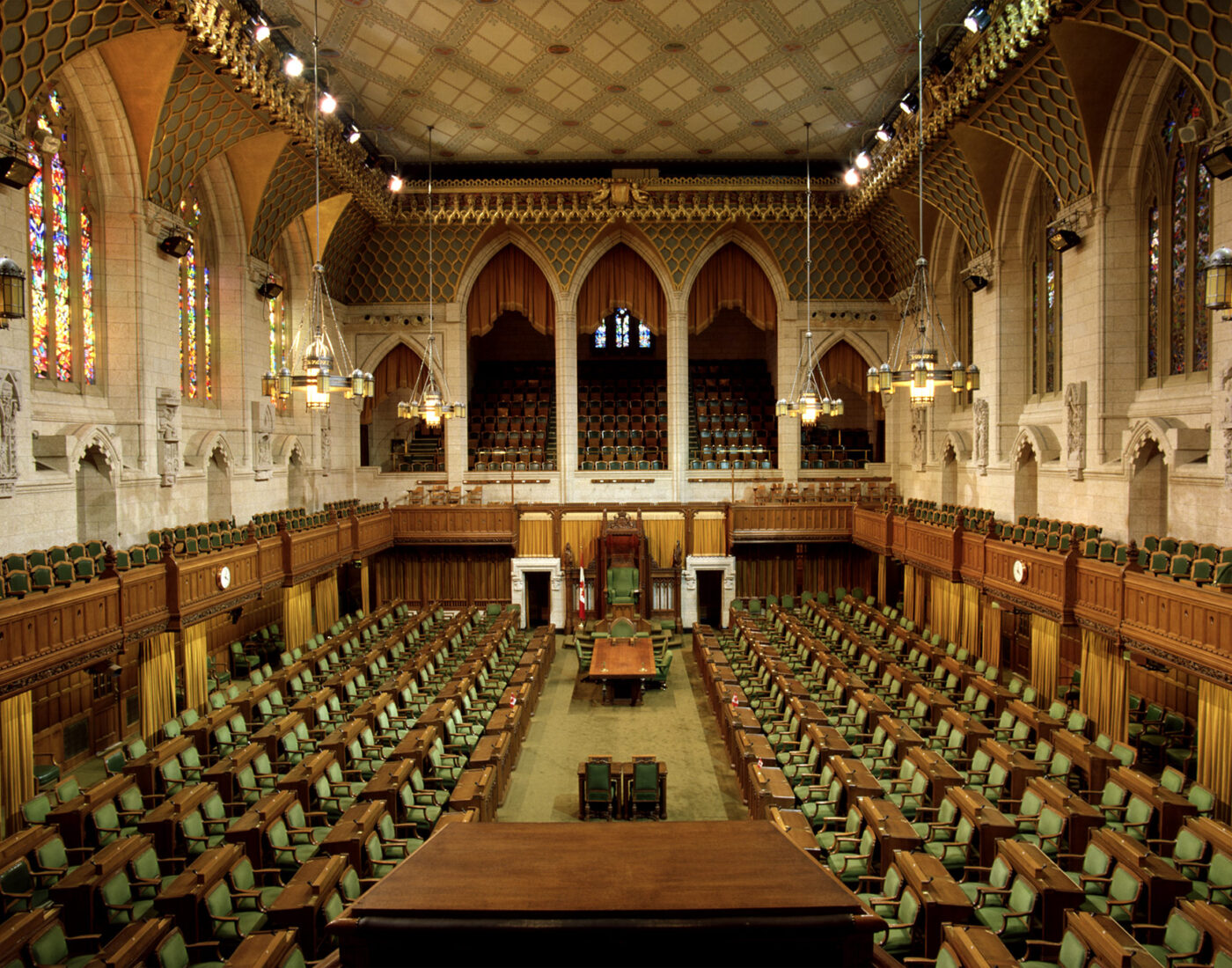PART 1
TORONTO ISN'T KNOWN FOR ITS ART. HERE'S WHY.
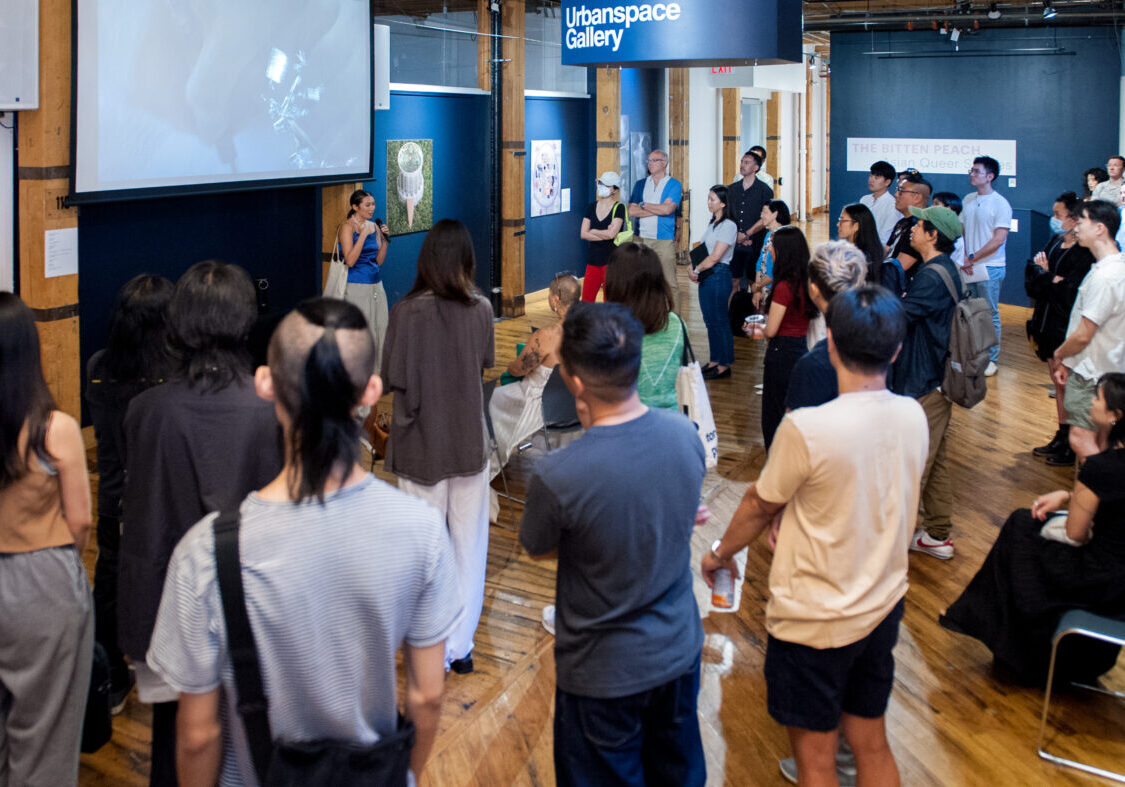
AN ARTIST EXPLAINS HER WORK AT THE LAUNCH EVENT FOR 'THE BITTEN PEACH: ASIAN QUEER SPACES' ON AUG. 3, 2023 IN THE URBANSPACE GALLERY AT 401 RICHMOND ST. W.

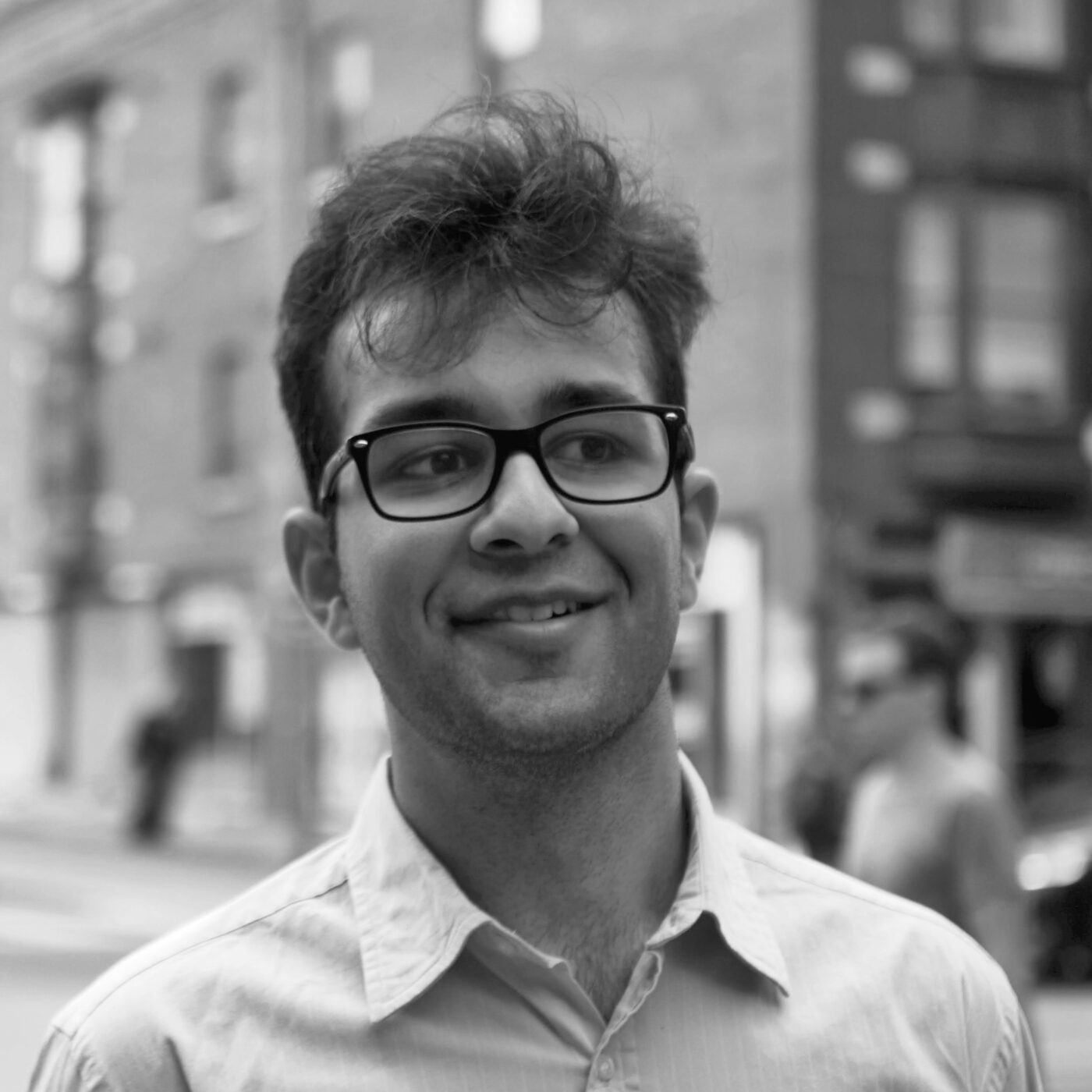
AMIT NEHRU
A Scarborough native and graduate of McMaster University's Bachelor of Health Sciences program. His preferred destination is the nearest library or hiking trail.
September 1, 2023
Over half of artists in Toronto make an annual income of less than $30,000, according to a member survey conducted in 2018 by local arts organization Akin Collective.
Five years later, many artists here are still struggling to make ends meet.
One of the most significant issues that Toronto-based artists face is the lack of paid opportunities, according to Emily Gong, director of Asian Arts and Culture Trust (AACT), a nonprofit organization that provides public programming to increase empathy, appreciation and representation of Asian heritage, arts and culture in Canada.
“Many of these artists are expected to work for free or accept lower rates [than CARFAC standard] in exchange for exposure, making it challenging for them to sustain a full-time art practice,” she explains. “This is especially difficult for those who have just graduated from art school and are already burdened with student debt.”
Gong adds that lack of fair compensation is an even bigger problem among younger artists who are typically less established than their older counterparts. Oftentimes, she says, these younger artists are unable to continue their practice because of financial precarity.
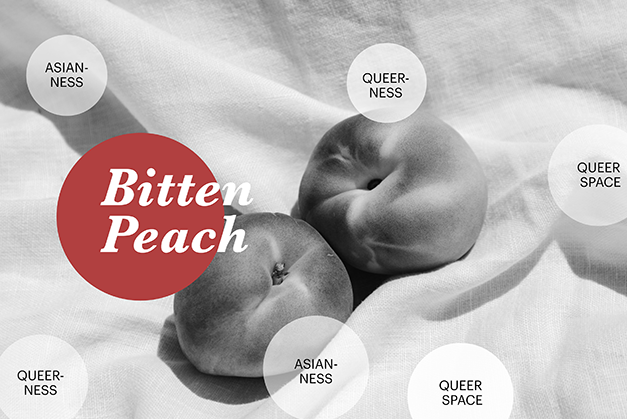
PROMOTIONAL IMAGE FOR 'THE BITTEN PEACH: ASIAN QUEER SPACES,' AN ART EXHIBIT IN THE URBANSPACE GALLERY AT 401 RICHMOND ST. W.

There are more than 40 art galleries in Toronto today. A decade ago, there were over 100 galleries, according to Joan Spence, founder and director of Spence Gallery, which exhibits contemporary artwork focused on Caribbean, Latin and African cultures by a diverse roster of early- to mid-career artists. Spence attributes this decline to the disappearance of affordable space in Toronto.
“Space is expensive, and space has gotten much more expensive in Toronto than in the past,” she explains. “People always say you should own the space, because that's the only way you can really make it. Otherwise…you're paying $10,000 a month in rent. That means you can't make it — you can never make any money.”
"The time that an artist needs in order to be an artist is just not there if you're spending 40 hours a week to pay rent."
ANSON NG
TORONTO-BASED ARTIST
Higher rent costs have also made it harder for artists to just be artists. Both Spence and Gong say many local artists only work on their art part-time. To pay rent, they often have to take on other jobs in hospitality or healthcare, for example. Younger artists disproportionately find themselves in these scenarios because their client base is less established, so they’re less likely to be able to sustain themselves with their art only, according to Spence.
Although experiences in other professional fields can inspire their work, job demands can also prevent artists from adequately devoting themselves to their craft.
“My friends who came out of art school, they're just getting to Toronto and they don't have a family home within the city,” says Anson Ng, a landscape painter based in Chinatown. “Many of us have to pay $800 to $1,800 a month in order to survive. So the time that an artist needs in order to be an artist is just not there if you're spending 40 hours a week to pay rent.”
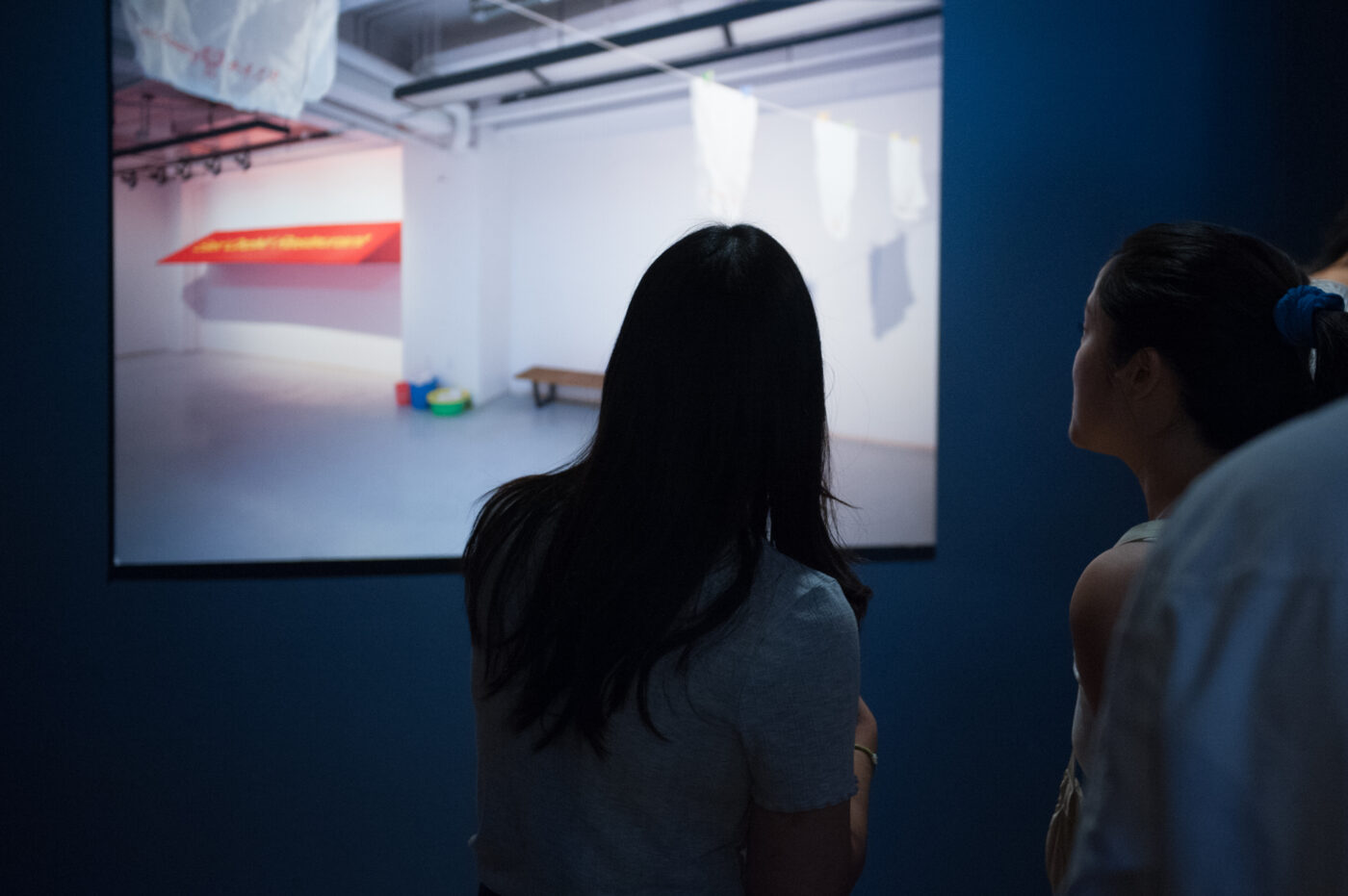
ATTENDEES CHECK OUT THE 'THE BITTEN PEACH: ASIAN QUEER SPACES' ART EXHIBIT ON AUG. 3, 2023 IN THE URBANSPACE GALLERY AT 401 RICHMOND ST. W.

To make matters even more challenging, Toronto lacks an art culture, Ng adds. “Our general population has a lack of understanding of the value of art, the value of expression, its value in the community and how it can make us feel,” he explains.
Spence echoes Ng’s sentiment. She says fine art is only seen as something to be enjoyed in public galleries such as the Art Gallery of Ontario, but not something to be owned privately. Spence notes that smaller galleries, where art can be purchased, don’t receive much traffic.
“The same way you buy cupcakes and keep the baker alive, buy art. That's how you keep the artists alive,” she says. “You keep them in their craft, in their business, in their careers. Buy their art. I don't think we have that understanding [in Toronto] yet.”
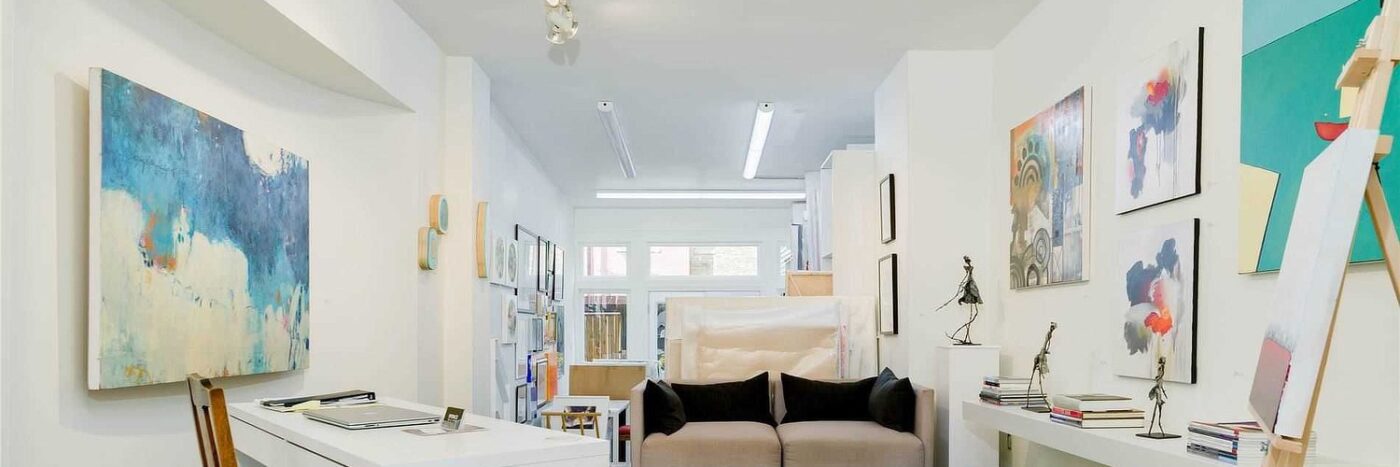
THE INTERIOR OF SPENCE GALLERY AT 106 HARBORD ST.

Spence highlights the contrast between Toronto and other major urban centres like New York and London where local galleries are often packed, which is why gallerists here have a harder time selling art and supporting local artists. She emphasizes that buying art shouldn’t be viewed as an elitist activity, and that high-quality pieces can be purchased for as low as $20 in Toronto.
Although local artists may not receive as much support as they need to fully pursue their craft, that doesn’t deter Ng. He reflects on his parents’ journey immigrating to a far less culturally diverse and accepting Canada, and starting a Thai restaurant nearly 30 years ago.
“It’s very hard to change culture,” Ng says. We [need] to start now as artists to build a foundation for our appreciation. And it takes a very, very long time for [this] to happen.”
Today’s stories lead to tomorrow’s solutions, so sign up for our newsletter to take action on the issues you learn about in The Green Line.
PART 2
HOW DIVERSE ARE TORONTO'S GALLERIES? CHECK OUT THIS DATABASE TO FIND OUT.
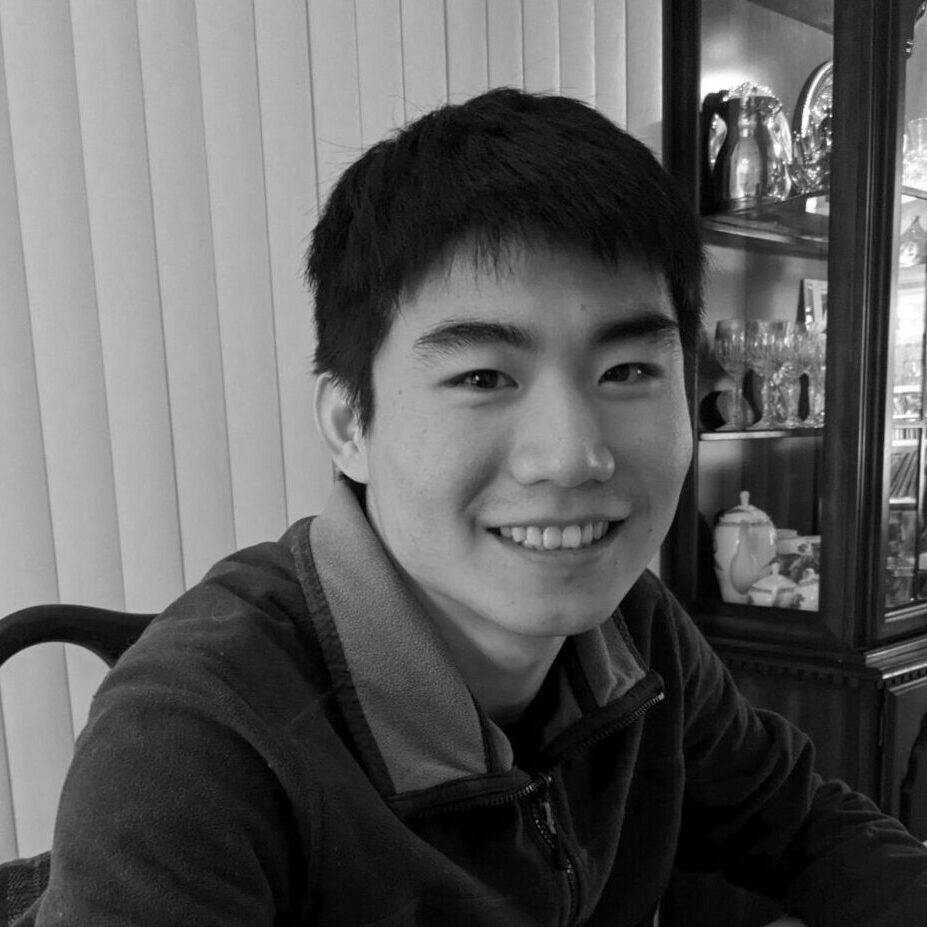
HANS XU
Full-stack developer passionate about making accessible, easy-to-use software. Staunchly anti-bloat, but learns React out of necessity. Interested in cybersecurity and best practices for online privacy.

AMIT NEHRU
A Scarborough native and graduate of McMaster University's Bachelor of Health Sciences program. His preferred destination is the nearest library or hiking trail.
September 11, 2023
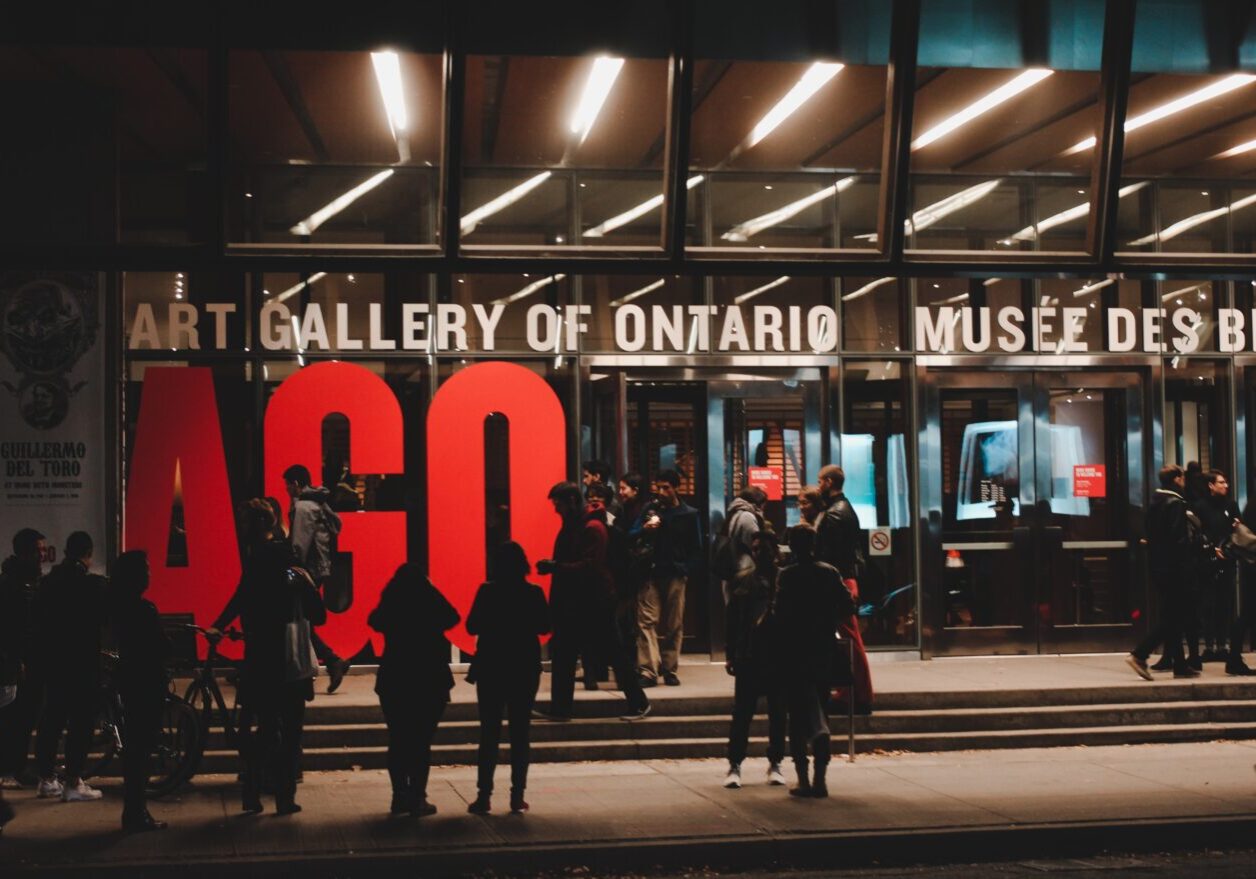
A GROUP OF PEOPLE STANDING OUTSIDE OF THE ART GALLERY OF ONTARIO AT 317 DUNDAS ST. W.

Our interactive database all about the diversity of Toronto’s visual arts scene.
It breaks down the demographic representation of a majority of Toronto art galleries based on gender, nationality, age, location and more.
To use the database, click on the dropdown menu to select your desired gallery or "Overall," which provides data on all 24 galleries included. Below are five charts that represent the demographic breakdown of exhibited artists in a given gallery by generation, nationality, gender, place of birth and place of residence.
A tooltip showing the number of exhibited artists and the percentage of the current total appears when you hover over each slice of the pie chart with your cursor. To exclude a category from the pie chart (or visually, to collapse a slice), click on the category in the legend.
For the pie charts displaying location, you can click on a country to see a breakdown by province or state within that country. In addition, clicking on a province or state will lead to a further breakdown by town or city within that province or state. Finally, clicking on the reset button will reset the chart back to the country level.
Currently showing:
OUR METHODOLOGY
Our team created this database to assess Toronto’s visual arts scene through an equity lens by determining the kinds of artists whose work tends to get exhibited by local galleries.
That’s why we broke down the demographic representation of 24 local galleries, which feature over 900 artists.
To get started, we conducted an exhaustive online search and consulted Toronto-based artists and gallerists to ensure the inclusion of as many local galleries as possible in our database. A total of 34 galleries were identified. Our team then contacted each gallery, requesting personal and demographic details about their current roster of artists, including name, age, place of birth, place of residence, nationality and gender.
Unfortunately, only two galleries responded to our request, so we modified our approach by collecting the names of all the exhibited artists from each gallery’s website. It’s important to note that since the time of our search in April 2023, these galleries may have added artists to their roster. We were able to collect data from the websites of 24 galleries.
If we needed more information about a given artist, we’d look at the gallery’s websites, which sometimes provided details about their artists, as well as at other sources, such as the federal government’s Artists in Canada database, Artnet, Artsy, Wikipedia and the artists’ personal websites. If sources presented conflicting data, we’d defer to information provided on the gallery website or the artist's personal site.
The name used by a gallery to denote a particular artist was the name we collected. While artist names are available online and our database does provide insights into the demographic makeup of each gallery, we chose not to publish demographic information about individual artists. This decision was made out of respect for their privacy and because we recognized that such data wasn’t valuable for the purposes of our reporting.
Age was calculated by subtracting the artist's date of birth from April 1, 2023. Date of birth, place of birth and place of residence information were all found via a comprehensive online search. Although our team collected very specific data on these locations, we only denoted specific cities for artists connected to Canada, the United States and the United Kingdom because they represented the majority of artists featured in local galleries. Meanwhile, artists from other places were grouped together only by country.
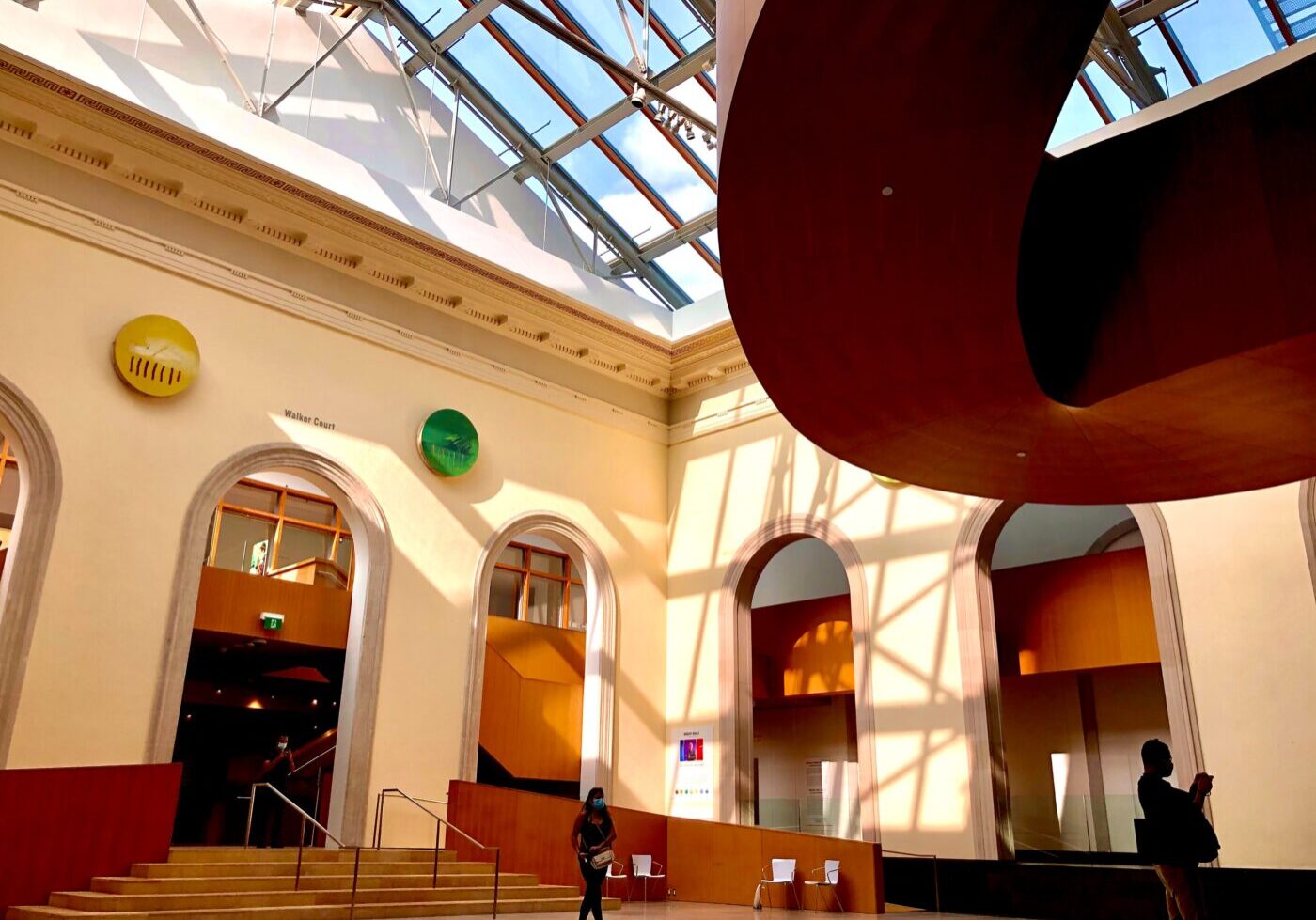
PEOPLE WALK AROUND WALKER COURT, THE CENTRAL MEETING SPACE IN THE ART GALLERY OF ONTARIO.

Our team initially aimed to collect ethnicity data from galleries, but this proved to be very difficult since they don’t readily collect or disclose that information. Attempts at determining ethnicity can be made using details such as place of birth, place of residence, and last name, but doing so would be speculative. For example, an artist may be born in and reside within Canada but may have parents hailing from Indonesia. The ethnic makeup of artists exhibited in Toronto-based galleries warrants further investigation, and in the future, we’d like to contact individual artists to gather this data. For the time being, our team decided to pivot to nationality data in place of ethnicity data, which was easier to obtain.
Finally, gender data was also difficult to glean for many artists. Local galleries don’t explicitly state the gender of the artists they exhibit, and artists themselves rarely reveal this information on their personal websites. Given that only he/him and she/her pronouns were found across our search, we decided to categorize artists who described themselves (or whom galleries described them) using he/him as men, and those using she/her as women.
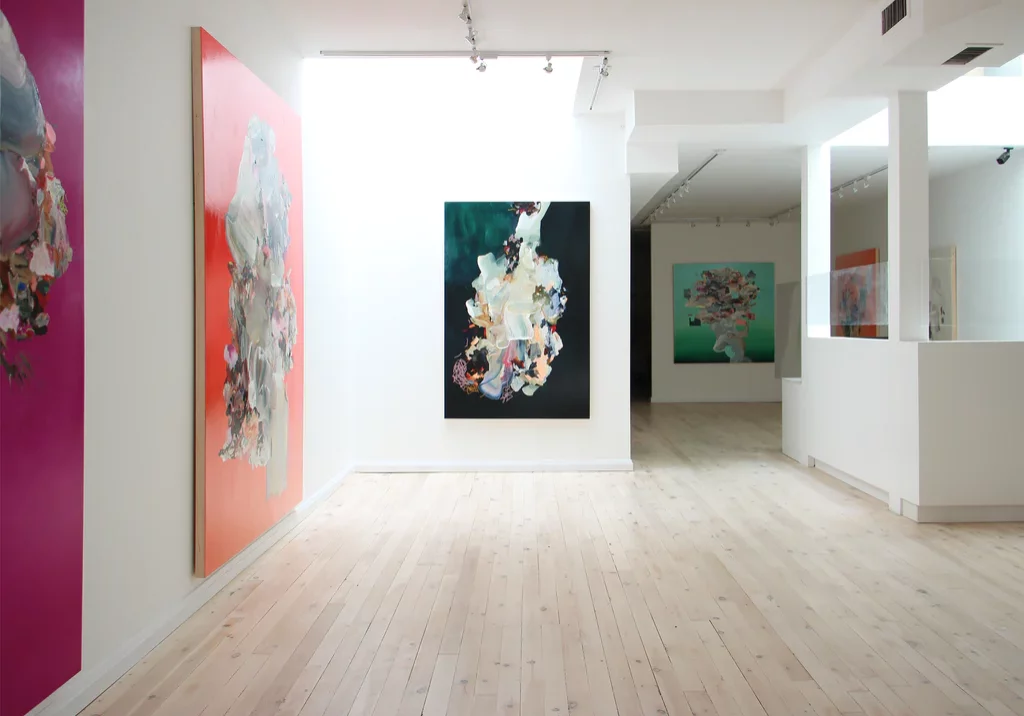
JANNA WATSON'S 'FRUIT OF THE LOOM' INSTALLATION IN BAU-XI GALLERY AT 340 DUNDAS ST. W.

OUR RESULTS
Here's what our data shows — and what it reveals about the visual arts scene in Toronto.
AGE
We obtained age data for 557 artists. Of these individuals, 28 per cent are dead. Of those still living, three artists are between the ages of 10 and 25 (Generation Z); 81 artists are between 26 and 45 (Millennials); 138 artists are between 46 and 58 (Generation X); 136 artists are between 59 and 77 (Baby Boomers); 42 artists are between 78 and 95 (Silent Generation); and two artists are 96 or older (Greatest Generation).
These findings suggest that artists included in our database of Toronto-based galleries tend to skew older. This raises several questions. Are younger artists having difficulty establishing themselves within the city, or are they eschewing traditional arts-sales pipelines for alternative platforms?
PLACE OF BIRTH
We obtained place of birth data for 791 artists. Eleven per cent of artists exhibited in our city’s galleries were born in Toronto, while a significant number hailed from Germany (3.9 per cent) and France (3.8 per cent). Montreal, New York City, and Vancouver were also well-represented, with 3.2 per cent, 2.1 per cent and 2.1 per cent, respectively. Interestingly, Iran, Hamilton in Ontario and Kinngait in Nunavut had smaller but still noteworthy representation among the artists.
Interestingly, only three artists for whom data was collected were born in China, and none were born in India. This is particularly noteworthy given that each country has large diasporic communities in Toronto.
PLACE OF RESIDENCE
We obtained place of residence data for 626 artists. Among artists exhibited in local galleries, 28.6 per cent reside in Toronto, suggesting that our city is still a destination for artists to create. We’re interested in conducting further research to determine whether or not Toronto is the best place for artists to work in Canada only, or if it’s a hotspot for artists around the world. A noteworthy percentage of artists exhibited in local galleries also live in New York City (5.4 per cent), Vancouver (4.8 per cent), Montreal (2.6 per cent) and France (2.4 per cent). Once again, China and India are both significantly underrepresented, especially given their sizable diasporic communities in Toronto, with no represented artists residing in either country.
NATIONALITY
We identified the nationalities of 440 artists. We found that the majority of artists in Toronto-based galleries are Canadian, with American, German, British, Iranian and French artists rounding out the top six. Interestingly, two Chinese-Canadians and one Indian-Canadian were identified.
GENDER
Our research reveals that 58.5 per cent of artists exhibited in Toronto-based galleries are men, while 32 per cent are female. We were not able to determine the gender of around 9 per cent of artists. However, when considering artists aged 42 and under (including Generation Z and Generation Alpha), the gender balance shifted, with 54.9 per cent identifying as women and 45.1 percent identifying as men. Our gender findings raise questions about whether or not artists who identify as 2SLGBTQI+ feel comfortable sharing this information with galleries, as well as with the broader public.
TORONTO'S CREATIVE PULSE: A DOCUMENTARY JOURNEY THROUGH 401 RICHMOND

JULIA LAWRENCE
Aspiring film photographer who studies journalism, communication and design at Toronto Metropolitan University. Visits beaches at 6 a.m. to clear her head.
September 11, 2023
This documentary was developed in Nicole Blanchett's "Reimagining the News" course in the School of Journalism at the Creative School at Toronto Metropolitan University (TMU).
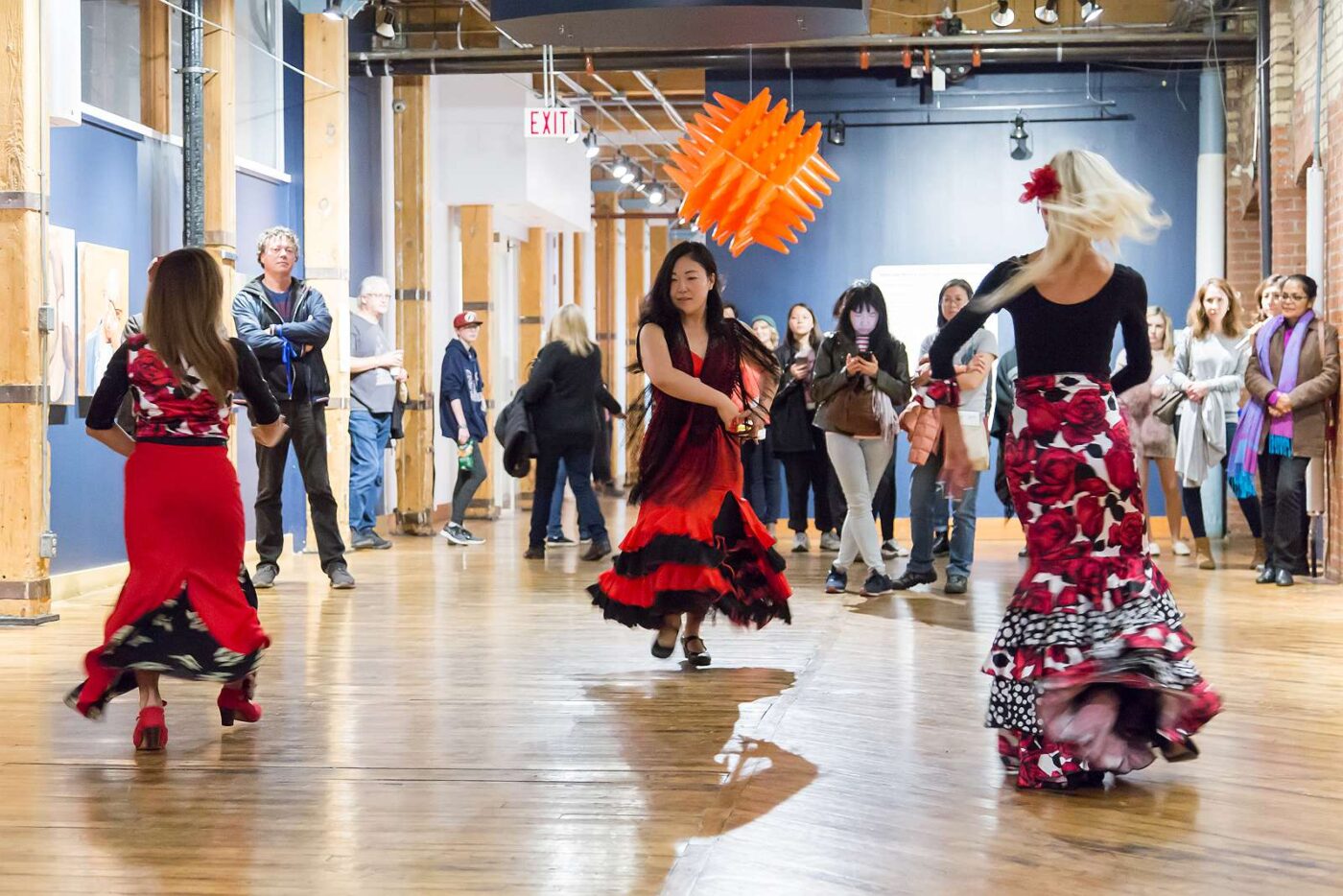
DANCERS PERFORMING IN 401 RICHMOND.

Our first-ever short documentary explores 401 Richmond, a historic warehouse-turned-creative hub located at Richmond Street West and Spadina Avenue near the Fashion District in downtown Toronto.
Community producer Julia Lawrence spoke with 401’s management and tenants to learn more about its unique ecosystem built on the three Cs: culture, creativity and community.
Since launching in 1994, 401 Richmond has taken an unconventional approach to organizing space in the building. Housing around 150 tenants, the hub’s accessibility and layout organically encourage meetups and collaboration between creators from disparate industries who might otherwise be working alone in different spaces. Beyond that, artists have the autonomy to create and display art in the way they want, without a curator’s intervention, which is a rarity in the art world.
That’s why 401 Richmond is a one-of-a-kind building in Toronto — but it doesn’t have to be the only one. Explore and experience 401 by watching our YouTube doc, below.
Here's your chance to support the only independent, hyperlocal news outlet dedicated to serving gen Zs, millennials and other underserved communities in Toronto. Donate now to support The Green Line.
PART 3
Reimagining Toronto's Art Scene: An Interactive Installation and Survey
A Nuit Blanche event hosted by Asian Arts and Culture Trust (AACT) and The Green Line.
About the Event
We're partnering with Asian Arts and Culture Trust (AACT) for Reimagining Toronto's Art Scene: An Interactive Installation and Survey, a highlight of the 12-hour Nuit Blanche celebration of contemporary art at Urbanspace Gallery. The Green Line is inviting action-oriented community members like you to brainstorm local solutions for supporting Toronto's visual arts scene. Also, be sure to check out AACT’s exhibition — The Bitten Peach: Asian Queer Spaces — which explores the intersectionality of Asian and queer identities, and emphasizes the importance of queer spaces in Toronto. RSVP now for our in-person event.
Events are an essential part of our Action Journey. We want to empower Torontonians to take action on the issues they learn about in The Green Line — so what better way to do that than by bringing people together? From community members to industry leaders, anyone in Toronto who’s invested in discussing and solving the problems explored in our features is invited to attend. All ages are welcome unless otherwise indicated. Our only guidelines? Be present. Listen. Be kind and courteous. Respect everyone’s privacy. Hate speech and bullying are absolutely not tolerated. At the end of the day, if you had fun and feel inspired after our events, then The Green Line team will have accomplished what we set out to do. Any questions? Contact Us.
PART 4
DEFINING WHAT ART MEANS TO YOU AND TORONTO
Event Overview
See what you missed
from our latest event.
Our community members brainstormed solutions for supporting Toronto's visual arts scene.
Compiled by Lanxin Jiang.
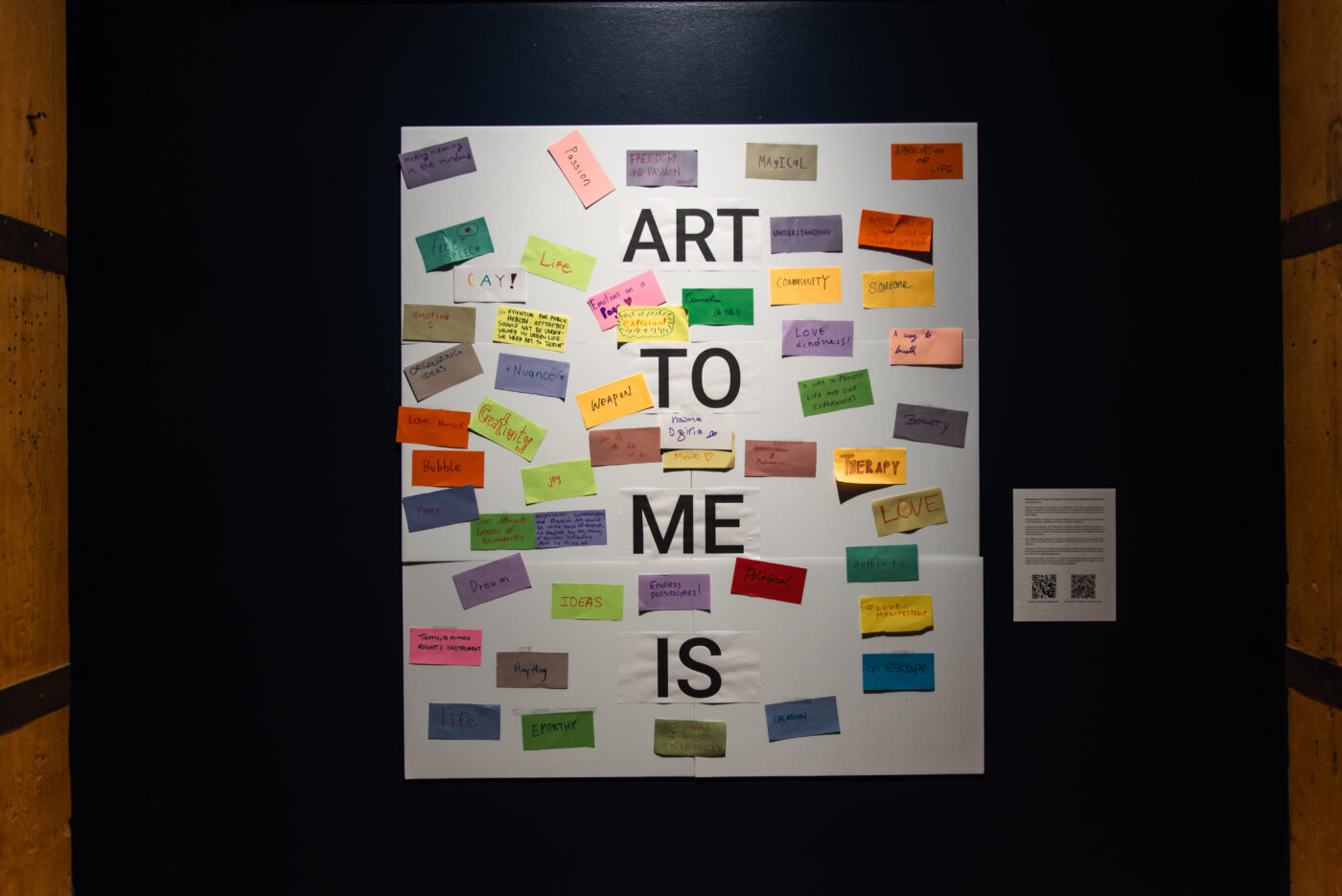
Visitors describe what art means to them in The Green Line's interactive survey installation.

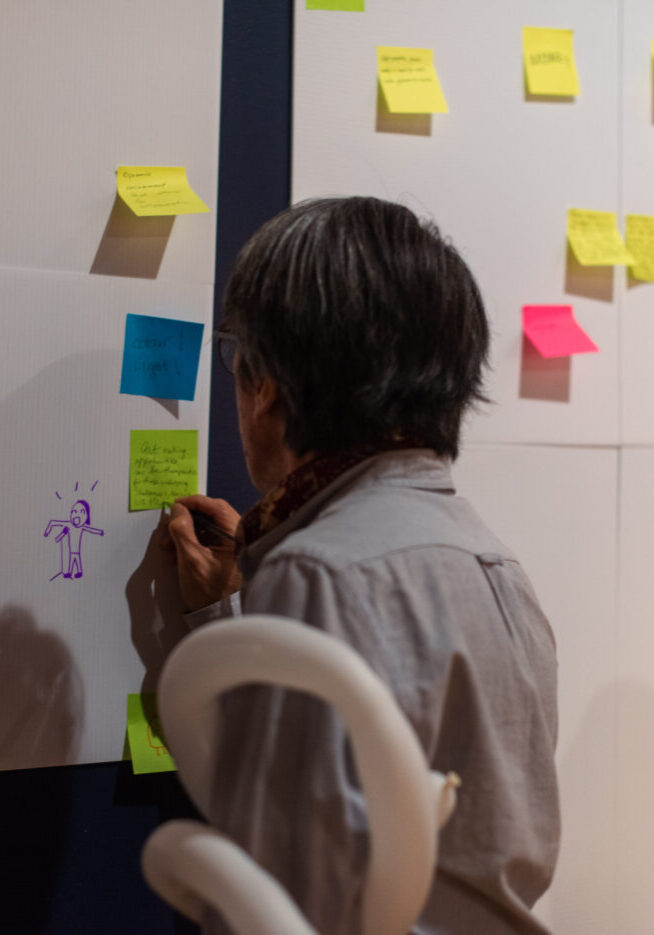
A visitor writes down their ideal version of Toronto's art scene at The Green Line's September Action Journey event at 401 Richmond.

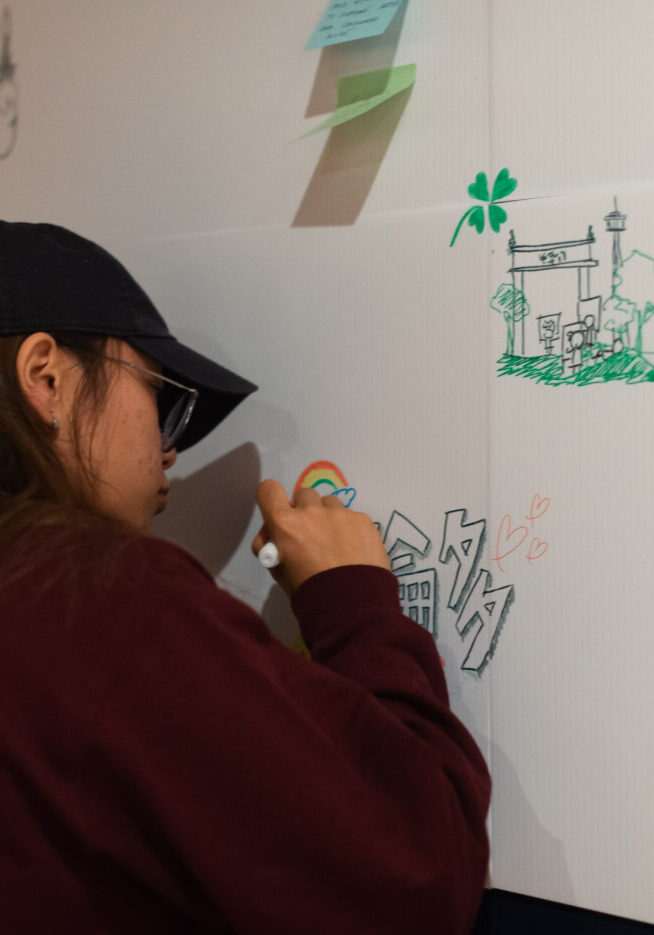
A visitor draws the word "Toronto" with hearts and a rainbow around it in response to The Green Line's prompt to envision the ideal art scene in the city.
📷: Aloysius Wong/The Green Line.
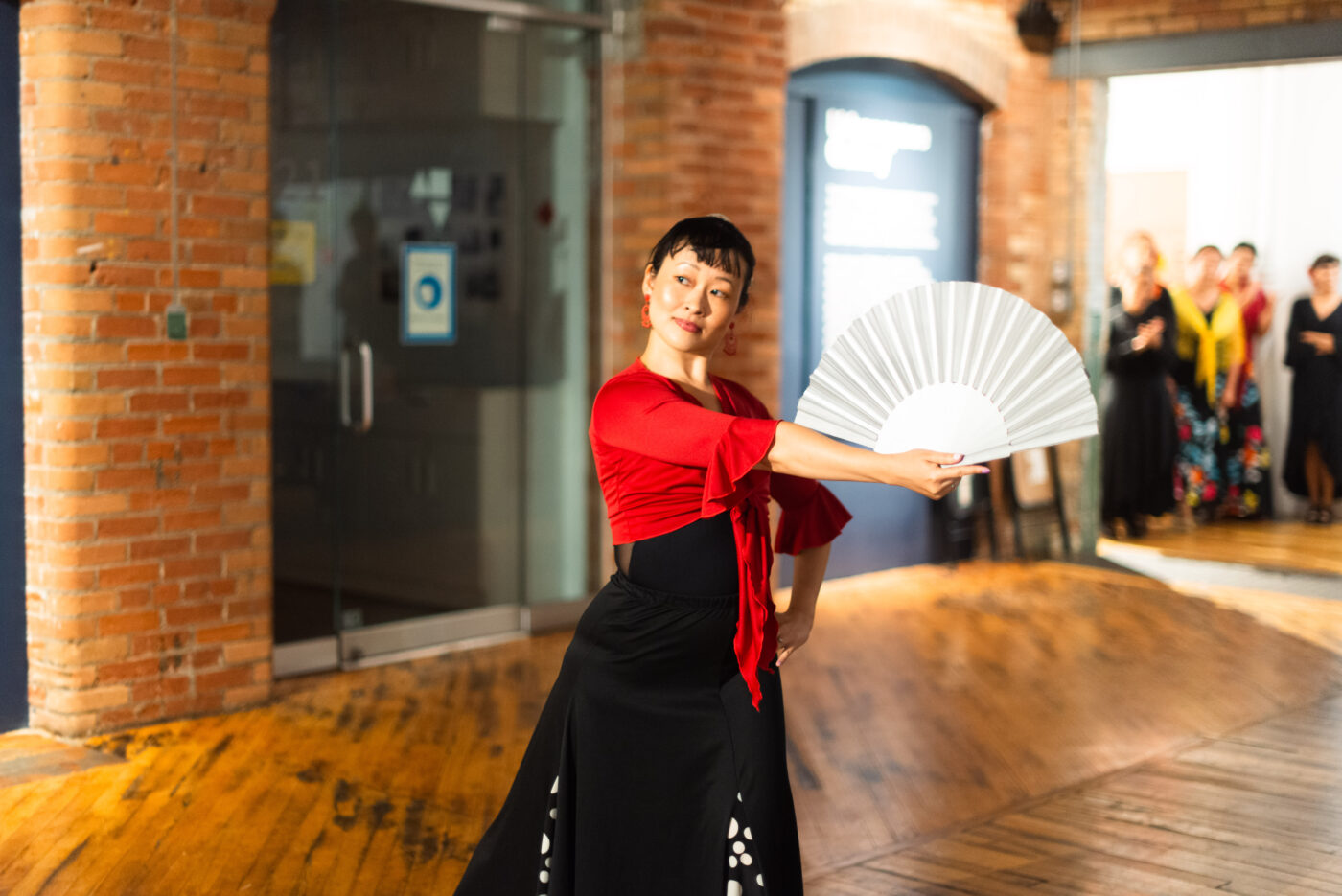
A flamenco dancer performs in the Urbanspace Gallery during Nuit Blanche.

SOLUTIONS
ACTIONS
Do something about the problems that
impact you and your communities.
Connect With
Arts Communities
The ArtworxTO website lists local programs that produce community-driven street art, monuments and other artforms, as well as facilitated arts-focused conversations and more.
Join Public
Arts Events
Arts in the Parks is a city-wide initiative that takes place in parks across Toronto. Events are free and offered for people of all ages. Examples of past events include concerts, visual art workshops and sculpturing.
Leverage Diverse
Revenue Sources
SKETCH is a community arts enterprise that issued community bonds and fundraised to purchase its studio in Toronto. Visit SKETCH’s website to learn more about revenue diversification in the local arts scene.
Join Our
Community
Continue the conversation with other Green Line community members.
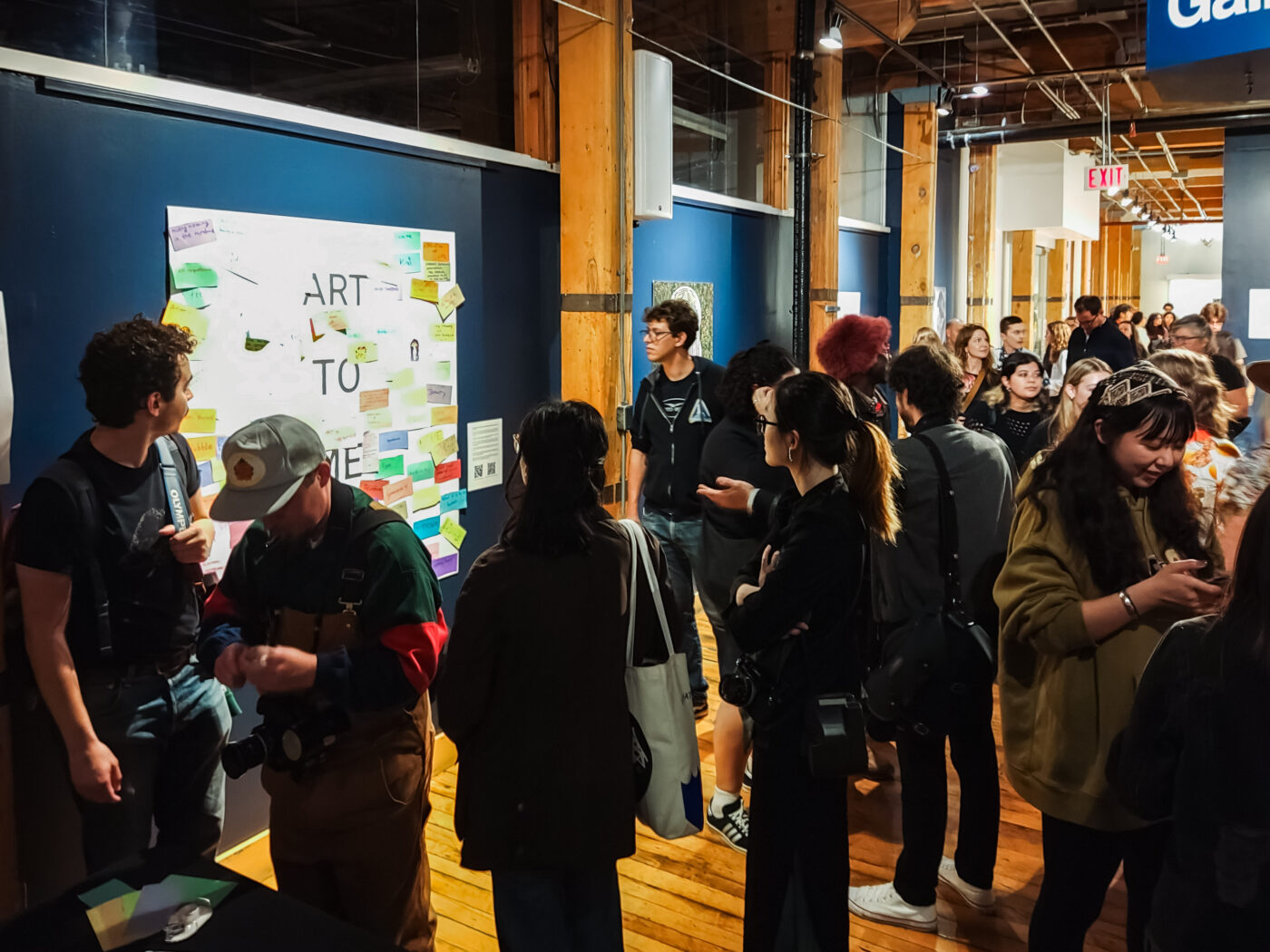
Nuit Blanche visitors interact with The Green Line's interactive art installation at our September Action Journey event in 401 Richmond's Urbanspace Gallery on Sept. 23, 2023.

Supporting The Green Line means supporting Toronto. Join our membership program today, so you can redefine our city as you see it.
